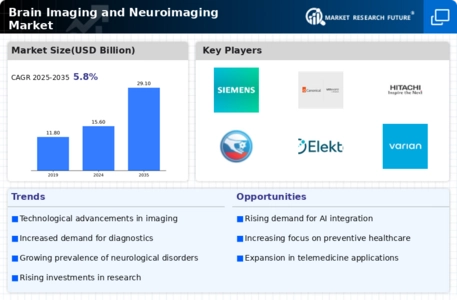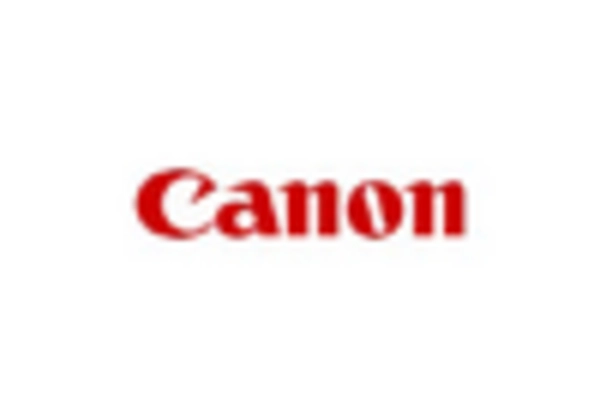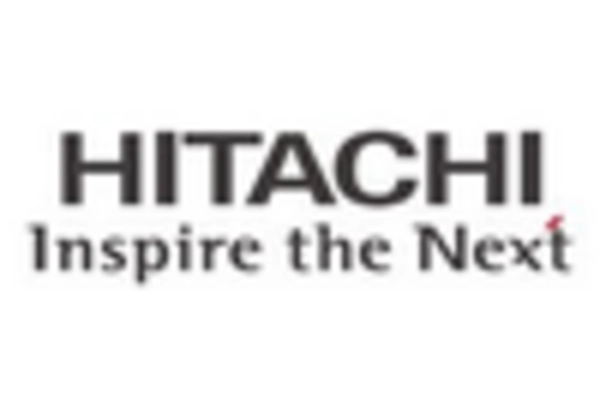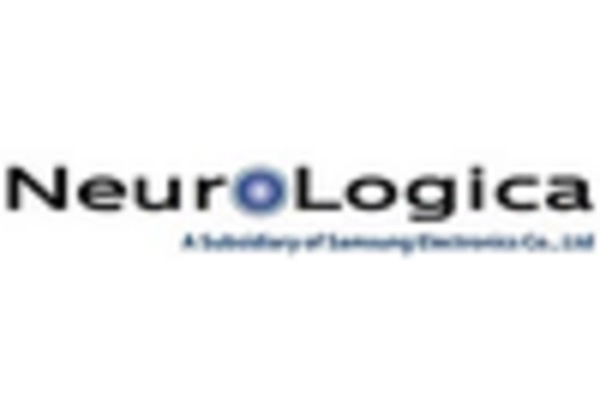-
EXECUTIVE SUMMARY
-
MARKET INTRODUCTION
-
Definition
-
Scope of the Study
- Research Objective
- Assumptions
- Limitations
-
RESEARCH METHODOLOGY
-
Overview
-
Data Mining
-
Secondary Research
-
Primary Research
- Primary Interviews and Information Gathering Process
- Breakdown of Primary Respondents
-
Forecasting Modality
-
Market Size Estimation
- Bottom-Up Approach
- Top-Down Approach
-
Data Triangulation
-
Validation
-
MARKET DYNAMICS
-
Overview
-
Drivers
-
Restraints
-
Opportunities
-
MARKET FACTOR ANALYSIS
-
Value Chain Analysis
-
Porter’s Five Forces Analysis
- Bargaining Power of Suppliers
- Bargaining Power of Buyers
- Threat of New Entrants
- Threat of Substitutes
- Intensity of Rivalry
-
COVID-19 Impact Analysis
- Market Impact Analysis
- Regional Impact
- Opportunity and Threat Analysis
-
GLOBAL BRAIN IMAGING AND NEUROIMAGING MARKET, BY IMAGING TYPE
-
Overview
-
Functional Magnetic Resonance Imaging (FMRI)
-
Compound Tomography (CT)
-
Positron Emission Tomography (PET)
-
Electroencephalography (EEG)
-
Magnetoencephalography (MEG)
-
Near Infrared Spectroscopy (NIRS)
-
GLOBAL BRAIN IMAGING AND NEUROIMAGING MARKET, BY END USER
-
Overview
-
Hospitals
-
Ambulatory Surgical Centers
-
Clinics and Diagnostic Centers
-
GLOBAL BRAIN IMAGING AND NEUROIMAGING MARKET, BY REGION
-
Overview
-
North America
- U.S.
- Canada
-
Europe
- Germany
- France
- U.K
- Italy
- Spain
- Rest of Europe
-
Asia-Pacific
- China
- India
- Japan
- South Korea
- Australia
- Rest of Asia-Pacific
-
Rest of the World
- Middle East
- Africa
- Latin America
-
COMPETITIVE LANDSCAPE
-
Overview
-
Competitive Analysis
-
Market Share Analysis
-
Major Growth Strategy in the Global Brain imaging and neuroimaging Market,
-
Competitive Benchmarking
-
Leading Players in Terms of Number of Developments in the Global Brain imaging and neuroimaging Market,
-
Key developments and Growth Strategies
- New IMAGING TYPE Launch/End User Deployment
- Merger & Acquisitions
- Joint Ventures
-
Major Players Financial Matrix
- Sales & Operating Income, 2022
- Major Players R&D Expenditure. 2022
-
COMPANY PROFILES
-
GE
- Company Overview
- Financial Overview
- Imaging Type Offered
- Key Developments
- SWOT Analysis
- Key Strategies
-
Siemens
- Company Overview
- Financial Overview
- Imaging Type Offered
- Key Developments
- SWOT Analysis
- Key Strategies
-
Canon
- Company Overview
- Financial Overview
- Imaging Type Offered
- Key Developments
- SWOT Analysis
- Key Strategies
-
Hitachi Medical Systems
- Company Overview
- Financial Overview
- Imaging Type Offered
- Key Developments
- SWOT Analysis
- Key Strategies
-
Medtronic PLC.
- Company Overview
- Financial Overview
- Imaging Type Offered
- Key Developments
- SWOT Analysis
- Key Strategies
-
EB Neuro S.p.A.
- Company Overview
- Financial Overview
- Imaging Type Offered
- Key Developments
- SWOT Analysis
- Key Strategies
-
Neurosoft
- Company Overview
- Financial Overview
- Imaging Type Offered
- Key Developments
- SWOT Analysis
- Key Strategies
-
MinFound Medical Systems Co. Ltd.
- Company Overview
- Financial Overview
- Imaging Type Offered
- Key Developments
- SWOT Analysis
- Key Strategies
-
Elekta
- Company Overview
- Financial Overview
- Imaging Type Offered
- Key Developments
- SWOT Analysis
- Key Strategies
-
Varian medical Systems
- Company Overview
- Financial Overview
- Imaging Type Offered
- Key Developments
- SWOT Analysis
- Key Strategies
-
General Electric Company
- Company Overview
- Financial Overview
- Imaging Type Offered
- Key Developments
- SWOT Analysis
- Key Strategies
-
Philips Healthcare
- Company Overview
- Financial Overview
- Imaging Type Offered
- Key Developments
- SWOT Analysis
- Key Strategies
-
Toshiba Medical Systems
- Company Overview
- Financial Overview
- Imaging Type Offered
- Key Developments
- SWOT Analysis
- Key Strategies
-
Sanrad medical Systems Pvt. Ltd
- Company Overview
- Financial Overview
- Imaging Type Offered
- Key Developments
- SWOT Analysis
- Key Strategies
-
Esaote SpA
- Company Overview
- Financial Overview
- Imaging Type Offered
- Key Developments
- SWOT Analysis
- Key Strategies
-
APPENDIX
-
References
-
Related Reports
-
-
LIST OF TABLES
-
GLOBAL BRAIN IMAGING AND NEUROIMAGING MARKET, SYNOPSIS, 2018-2032
-
GLOBAL BRAIN IMAGING AND NEUROIMAGING MARKET, ESTIMATES & FORECAST, 2018-2032 (USD BILLION)
-
GLOBAL BRAIN IMAGING AND NEUROIMAGING MARKET, BY IMAGING TYPE, 2018-2032 (USD BILLION)
-
GLOBAL BRAIN IMAGING AND NEUROIMAGING MARKET, BY END USER, 2018-2032 (USD BILLION)
-
NORTH AMERICA BRAIN IMAGING AND NEUROIMAGING MARKET, BY IMAGING TYPE, 2018-2032 (USD BILLION)
-
NORTH AMERICA BRAIN IMAGING AND NEUROIMAGING MARKET, BY END USER, 2018-2032 (USD BILLION)
-
NORTH AMERICA BRAIN IMAGING AND NEUROIMAGING MARKET, BY COUNTRY, 2018-2032 (USD BILLION)
-
U.S. BRAIN IMAGING AND NEUROIMAGING MARKET, BY IMAGING TYPE, 2018-2032 (USD BILLION)
-
U.S. BRAIN IMAGING AND NEUROIMAGING MARKET, BY END USER, 2018-2032 (USD BILLION)
-
CANADA BRAIN IMAGING AND NEUROIMAGING MARKET, BY IMAGING TYPE, 2018-2032 (USD BILLION)
-
CANADA BRAIN IMAGING AND NEUROIMAGING MARKET, BY END USER, 2018-2032 (USD BILLION)
-
EUROPE BRAIN IMAGING AND NEUROIMAGING MARKET, BY IMAGING TYPE, 2018-2032 (USD BILLION)
-
EUROPE BRAIN IMAGING AND NEUROIMAGING MARKET, BY END USER, 2018-2032 (USD BILLION)
-
EUROPE BRAIN IMAGING AND NEUROIMAGING MARKET, BY COUNTRY, 2018-2032 (USD BILLION)
-
GERMANY BRAIN IMAGING AND NEUROIMAGING MARKET, BY IMAGING TYPE, 2018-2032 (USD BILLION)
-
GERMANY BRAIN IMAGING AND NEUROIMAGING MARKET, BY END USER, 2018-2032 (USD BILLION)
-
FRANCE BRAIN IMAGING AND NEUROIMAGING MARKET, BY IMAGING TYPE, 2018-2032 (USD BILLION)
-
FRANCE BRAIN IMAGING AND NEUROIMAGING MARKET, BY END USER, 2018-2032 (USD BILLION)
-
ITALY BRAIN IMAGING AND NEUROIMAGING MARKET, BY IMAGING TYPE, 2018-2032 (USD BILLION)
-
ITALY BRAIN IMAGING AND NEUROIMAGING MARKET, BY END USER, 2018-2032 (USD BILLION)
-
SPAIN BRAIN IMAGING AND NEUROIMAGING MARKET, BY IMAGING TYPE, 2018-2032 (USD BILLION)
-
SPAIN BRAIN IMAGING AND NEUROIMAGING MARKET, BY END USER, 2018-2032 (USD BILLION)
-
U.K BRAIN IMAGING AND NEUROIMAGING MARKET, BY IMAGING TYPE, 2018-2032 (USD BILLION)
-
U.K BRAIN IMAGING AND NEUROIMAGING MARKET, BY END USER, 2018-2032 (USD BILLION)
-
REST OF EUROPE BRAIN IMAGING AND NEUROIMAGING MARKET, BY IMAGING TYPE, 2018-2032 (USD BILLION)
-
REST OF EUROPE BRAIN IMAGING AND NEUROIMAGING MARKET, BY END USER, 2018-2032 (USD BILLION)
-
ASIA PACIFIC BRAIN IMAGING AND NEUROIMAGING MARKET, BY IMAGING TYPE, 2018-2032 (USD BILLION)
-
ASIA PACIFIC BRAIN IMAGING AND NEUROIMAGING MARKET, BY END USER, 2018-2032 (USD BILLION)
-
ASIA PACIFIC BRAIN IMAGING AND NEUROIMAGING MARKET, BY COUNTRY, 2018-2032 (USD BILLION)
-
JAPAN BRAIN IMAGING AND NEUROIMAGING MARKET, BY IMAGING TYPE, 2018-2032 (USD BILLION)
-
JAPAN BRAIN IMAGING AND NEUROIMAGING MARKET, BY END USER, 2018-2032 (USD BILLION)
-
CHINA BRAIN IMAGING AND NEUROIMAGING MARKET, BY IMAGING TYPE, 2018-2032 (USD BILLION)
-
CHINA BRAIN IMAGING AND NEUROIMAGING MARKET, BY END USER, 2018-2032 (USD BILLION)
-
INDIA BRAIN IMAGING AND NEUROIMAGING MARKET, BY IMAGING TYPE, 2018-2032 (USD BILLION)
-
INDIA BRAIN IMAGING AND NEUROIMAGING MARKET, BY END USER, 2018-2032 (USD BILLION)
-
AUSTRALIA BRAIN IMAGING AND NEUROIMAGING MARKET, BY IMAGING TYPE, 2018-2032 (USD BILLION)
-
AUSTRALIA BRAIN IMAGING AND NEUROIMAGING MARKET, BY END USER, 2018-2032 (USD BILLION)
-
SOUTH KOREA BRAIN IMAGING AND NEUROIMAGING MARKET, BY IMAGING TYPE, 2018-2032 (USD BILLION)
-
SOUTH KOREA BRAIN IMAGING AND NEUROIMAGING MARKET, BY END USER, 2018-2032 (USD BILLION)
-
REST OF ASIA-PACIFIC BRAIN IMAGING AND NEUROIMAGING MARKET, BY IMAGING TYPE, 2018-2032 (USD BILLION)
-
REST OF ASIA-PACIFIC BRAIN IMAGING AND NEUROIMAGING MARKET, BY END USER, 2018-2032 (USD BILLION)
-
REST OF WORLD BRAIN IMAGING AND NEUROIMAGING MARKET, BY IMAGING TYPE, 2018-2032 (USD BILLION)
-
REST OF WORLD BRAIN IMAGING AND NEUROIMAGING MARKET, BY END USER, 2018-2032 (USD BILLION)
-
REST OF WORLD BRAIN IMAGING AND NEUROIMAGING MARKET, BY COUNTRY, 2018-2032 (USD BILLION)
-
MIDDLE EAST BRAIN IMAGING AND NEUROIMAGING MARKET, BY IMAGING TYPE, 2018-2032 (USD BILLION)
-
MIDDLE EAST BRAIN IMAGING AND NEUROIMAGING MARKET, BY END USER, 2018-2032 (USD BILLION)
-
AFRICA BRAIN IMAGING AND NEUROIMAGING MARKET, BY IMAGING TYPE, 2018-2032 (USD BILLION)
-
AFRICA BRAIN IMAGING AND NEUROIMAGING MARKET, BY END USER, 2018-2032 (USD BILLION)
-
LATIN AMERICA BRAIN IMAGING AND NEUROIMAGING MARKET, BY IMAGING TYPE, 2018-2032 (USD BILLION)
-
LATIN AMERICA BRAIN IMAGING AND NEUROIMAGING MARKET, BY END USER, 2018-2032 (USD BILLION)
-
-
LIST OF FIGURES
-
RESEARCH PROCESS
-
MARKET STRUCTURE FOR THE GLOBAL BRAIN IMAGING AND NEUROIMAGING MARKET
-
MARKET DYNAMICS FOR THE GLOBAL BRAIN IMAGING AND NEUROIMAGING MARKET
-
GLOBAL BRAIN IMAGING AND NEUROIMAGING MARKET, SHARE (%), BY IMAGING TYPE, 2022
-
GLOBAL BRAIN IMAGING AND NEUROIMAGING MARKET, SHARE (%), BY END USER, 2022
-
GLOBAL BRAIN IMAGING AND NEUROIMAGING MARKET, SHARE (%), BY REGION, 2022
-
NORTH AMERICA: BRAIN IMAGING AND NEUROIMAGING MARKET, SHARE (%), BY REGION, 2022
-
EUROPE: BRAIN IMAGING AND NEUROIMAGING MARKET, SHARE (%), BY REGION, 2022
-
ASIA-PACIFIC: BRAIN IMAGING AND NEUROIMAGING MARKET, SHARE (%), BY REGION, 2022
-
REST OF THE WORLD: BRAIN IMAGING AND NEUROIMAGING MARKET, SHARE (%), BY REGION, 2022
-
GLOBAL BRAIN IMAGING AND NEUROIMAGING MARKET: COMPANY SHARE ANALYSIS, 2022 (%)
-
GE: FINANCIAL OVERVIEW SNAPSHOT
-
GE: SWOT ANALYSIS
-
SIEMENS: FINANCIAL OVERVIEW SNAPSHOT
-
SIEMENS: SWOT ANALYSIS
-
CANON: FINANCIAL OVERVIEW SNAPSHOT
-
CANON: SWOT ANALYSIS
-
HITACHI MEDICAL SYSTEMS: FINANCIAL OVERVIEW SNAPSHOT
-
HITACHI MEDICAL SYSTEMS: SWOT ANALYSIS
-
MEDTRONIC PLC..: FINANCIAL OVERVIEW SNAPSHOT
-
MEDTRONIC PLC..: SWOT ANALYSIS
-
EB NEURO S.P.A.: FINANCIAL OVERVIEW SNAPSHOT
-
EB NEURO S.P.A.: SWOT ANALYSIS
-
NEUROSOFT: FINANCIAL OVERVIEW SNAPSHOT
-
NEUROSOFT: SWOT ANALYSIS
-
MINFOUND MEDICAL SYSTEMS CO. LTD.: FINANCIAL OVERVIEW SNAPSHOT
-
MINFOUND MEDICAL SYSTEMS CO. LTD.: SWOT ANALYSIS
-
ELEKTA: FINANCIAL OVERVIEW SNAPSHOT
-
ELEKTA: SWOT ANALYSIS
-
VARIAN MEDICAL SYSTEMS: FINANCIAL OVERVIEW SNAPSHOT
-
VARIAN MEDICAL SYSTEMS: SWOT ANALYSIS
-
GENERAL ELECTRIC COMPANY: FINANCIAL OVERVIEW SNAPSHOT
-
GENERAL ELECTRIC COMPANY: SWOT ANALYSIS
-
PHILIPS HEALTHCARE: FINANCIAL OVERVIEW SNAPSHOT
-
PHILIPS HEALTHCARE: SWOT ANALYSIS
-
TOSHIBA MEDICAL SYSTEMS: FINANCIAL OVERVIEW SNAPSHOT
-
TOSHIBA MEDICAL SYSTEMS: SWOT ANALYSIS
-
SANRAD MEDICAL SYSTEMS PVT. LTD: FINANCIAL OVERVIEW SNAPSHOT
-
SANRAD MEDICAL SYSTEMS PVT. LTD: SWOT ANALYSIS
-
ESAOTE SPA: FINANCIAL OVERVIEW SNAPSHOT
-
ESAOTE SPA: SWOT ANALYSIS

















Leave a Comment